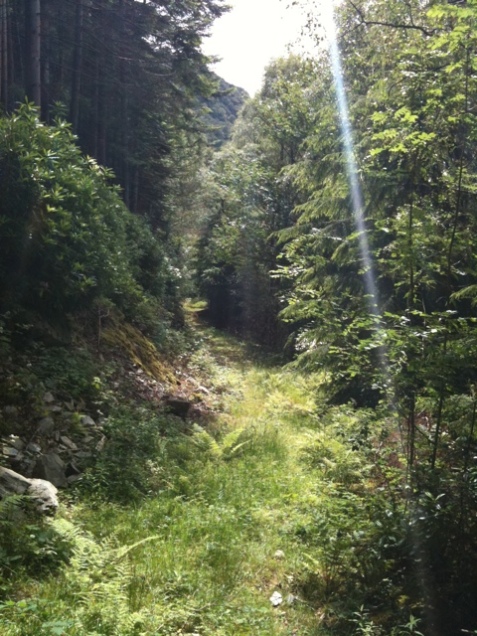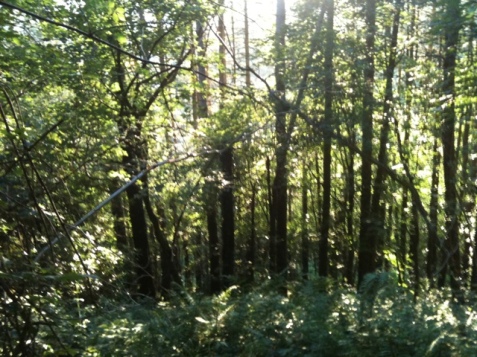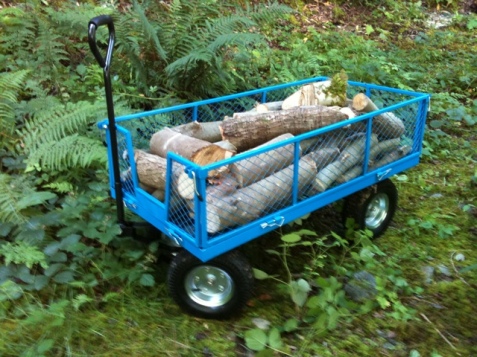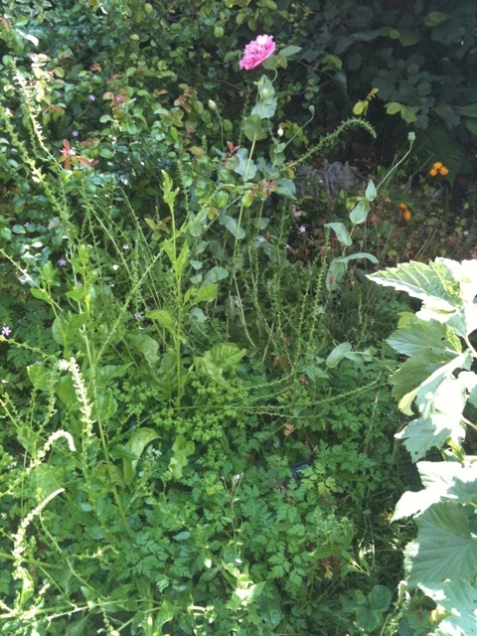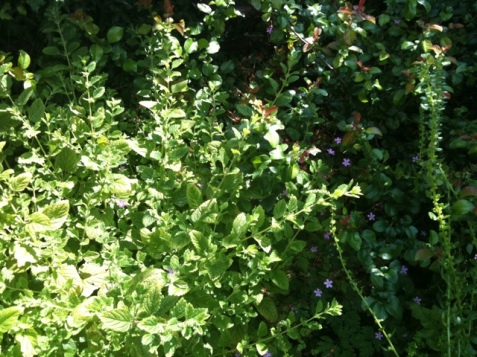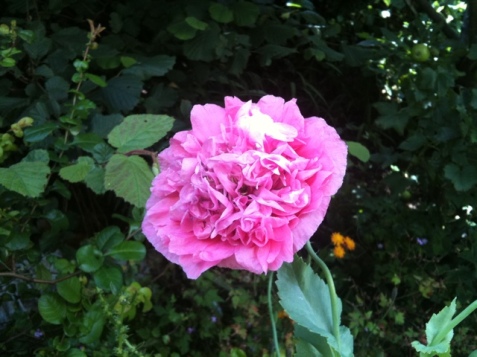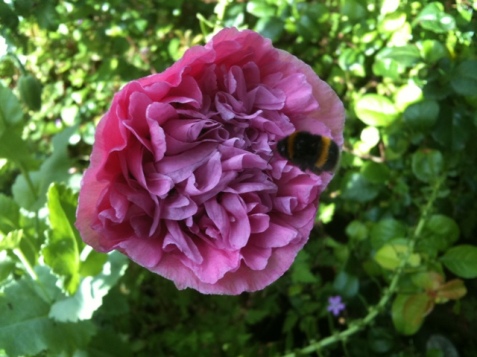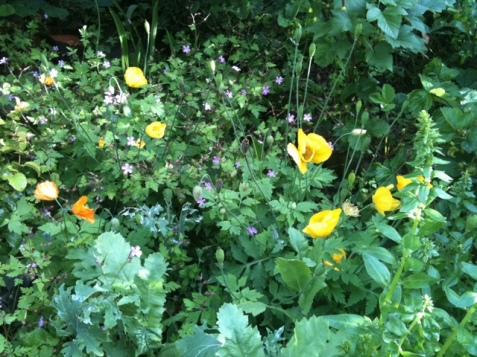Well, I took on Valley Wood in May, and I confess that when I bought it I didn’t really have any idea of how I was actually going to manage and improve it. But after a few months of hard-working weekends down there, I think I have a basic plan for it, which is turning out to be surprisingly sustainable, both financially and environmentally.
Valley Wood is a mixed woodland of conifers (mainly Noble Fir and Scots Pine) and all manner of deciduous broadleaved trees.
As it is long neglected, there is a fair quantity of dead trees in the wood – some lying on the forest floor, some hung up in other trees, and some still standing. A fair proportion of the standing dead trees are conifers.
The dead trees lying on the forest floor tend to be rotten, but this is good as they provide habitats for all kinds of life. They can happily be left to decay where they are.
Hung up trees and standing dead trees are potentially a hazard as they can fall over or down, and removing them frees up empty space in the woodland where new broadleaved trees can be encouraged. Dead standing trees are fortunately also ready-seasoned firewood with a very low water content, so can be harvested and burned almost immediately after only a short period of air drying. This is a massive benefit in financial terms, especially with the winter not too far away, as it removes the need for a firewood ‘production line’ where normally logs must be seasoned for at least one year before they can be transported and burned. Driving a van full of water-ridden logs which would burn poorly at the end of the journey would make no sense at all – but with this plan, there is a huge quantity of ready-seasoned firewood and harvesting it will open up the woodland to recolonisation by broadleaves.
It costs me about half a tank of diesel to visit the woodland, but I reckon the financial cost is only what I would have spent at home on a normal weekend, going out for a meal and some drinks on a Friday or Saturday. And as my living costs at the wood are negligible, I count it as cost neutral really. Similarly with the cost of the woodland itself – although I’m paying interest on the money borrowed, land tends to appreciate in value so I’m not making a loss on the land.
I reckon I can fit about a cubic metre of firewood in my van, which at home I normally pay about £80 for during the winter months – during summer my solar hot water system provides all of my hot water for bathing and washing up.
So as long as I come back with a van load of logs every time I visit, I’m £80 in profit – or another way of looking at it is that the sun is also heating my home for free in the winter as well as the summer, in the form of stored sunlight (firewood). This means that my only overhead as far as fuel goes is electricity, which I’m estimating at maybe £250 a year at current prices.
Not bad for a Victorian terrace.
The woodland has other harvestable products – ferns which can be sold for gardens, living Christmas trees, and maybe in time mushrooms if I get around to setting up some mushroom logs.
But quite apart from all of this, there is the sheer recreational value of the woodland, and as a destination for Transition camping expeditions and the like. But there is a lot of work to be done first – camping and communal areas to be hacked out of the mountainside, shelters to be built and the like.
A few weeks back, I received the documents from the Land Registry showing the ownership of Valley Wood going back to just after the Second World War. They show a long history of the woodland being bought from local or national government, and then being sold back again some time later.
As it doesn’t seem as though any kind of harvesting or management of the trees has taken place, my thought is that private owners have repeatedly tried to find a way of commercially exploiting the woodland, but have not succeeded due to the difficult terrain. The woodland is on a steeply sloping hillside, which makes mechanised timber extraction difficult and expensive, and extraction by horses and hand is not normally used for commercial operations. So the woodland has remained as it is, wild and neglected.
I am hoping that what Valley Wood actually needs is a different approach to management – a Permaculture approach which will maximise the efficient production of usable resources from the wood, whilst simultaneously meeting regeneration and biodiversity objectives.
The huge quantities of invasive rhododendron on site could potentially provide a firewood source for those staying in the woodland, to avoid the need to use the “good” firewood being extracted for domestic use. This would meet the goal of rhododendron control and a return of the forest ecosystem whilst providing warmth for those staying on-site.
The many apparent problems of the woodland can increasingly be seen as unique features, even beneficial in some respects. Instead of spending thousands of pounds (which I don’t have) on track improvement and tree clearance for artificial campsite creation, my expenditure on tools is as follows:-
Chainsaw (the only mechanised tool in use in Valley Wood)
Billhook (for clearing tracks and trimming trees)
Log tongs (for manipulating large logs)
Folding pruning saw
Mattock
Spade
Log trolley
Forestry winch (for hauling the log trolley up steep inclines, bringing down hung-up trees and moving large rocks)
All of which total I reckon about £500. So at £80 profit per trip in firewood, that’s about 6 trips before the equipment has paid for itself. Pretty good economics, sustainably speaking! Plus of course, this very light touch approach to woodland management is infinitely better in terms of resources used and environmental impact.
Very interesting, the way Valley Wood is developing. And the taste of my first woodland blackberries and raspberries on my last trip was a whole other world of experience in itself! 🙂
